So I completed my first GA flight to the UK today, a business trip taking me from my homebase EDTH to EGNM. The UK is unlike the rest of the world, even in how they do IFR. I used Philipp Tiemann's excellent site where he explains to German pilots how to fly in the UK.
The weather looked benign, no clouds above FL100 in GRAMET and nothing worse than SCT. Weather for Leeds was reported to be good.
The filed routing was
GUPIN/N0140F100 IFR DCT TAGIK DCT RORAS DCT OLIVI DCT HAN DCT UNEPI DCT DINKI DCT FLO DCT NIK L179 HELEN L179 COA L179 SASKI L608 SUMUM DCT ARTOV DCT GOPOD DCT SIVDA DCT LESTA DCT TNT
which only had a 2% overhead, excellent routing. I took off at 1100Z and headed towards the Belgian border.

I was limited to FL100 in Germany due to some extensive US military operations between FL100 and FL240, a lot of airliners had the same limitation. Here's Ramstein, probably the largest US airforce installation in Europe:
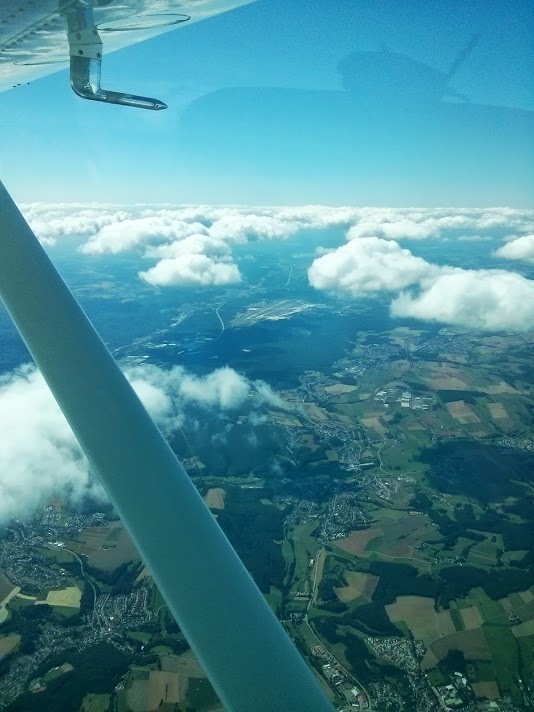
In Luxemburg, I got a climb to FL110 and then FL120 to gain a bit more altitude above the SCT cloud layer. The routing led me right over my childhood home Brussels which has grown to quite some size.

Unfortunately, the winds got stronger and they were directly on my nose so all the fuel I was burning got me C172 speed. The wind was between 35-40kt until my arrival, frustrating:
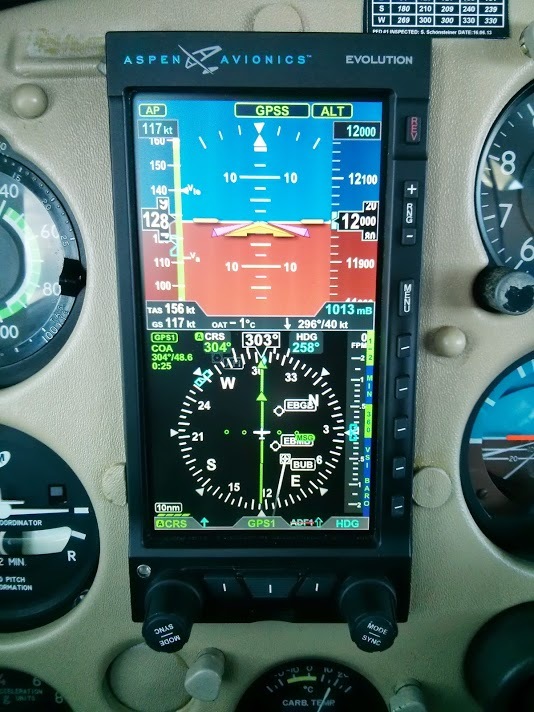
Once I arrived at the Belgian coast, I put on my life jacket (life raft was within reach) and started to watch the engine monitor even more carefully. I chose to take a direct flight path as opposed to minimizing the time over the open sea, I thought my aircraft would be happy about the extra trust I put in it!
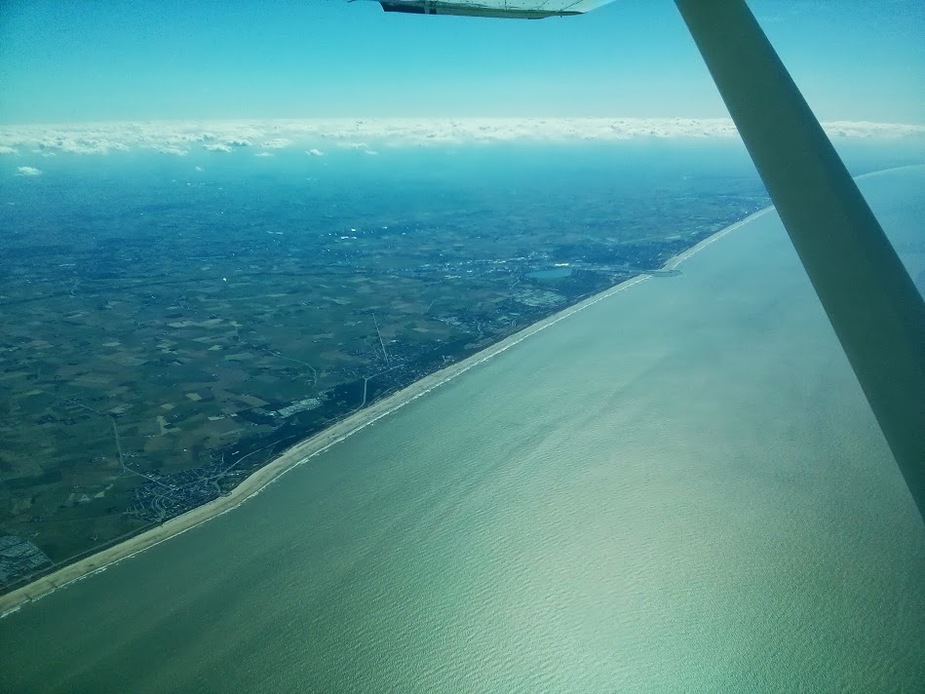
As soon as I had reached the beautiful beach of Oostende, I was transferred to London Control and this is where the fun started. They told me immediately that I can forget about my flight plan and that I will be flying to London now: direct Clacton VOR (CLN) and then Brookmans Park (BPK) which is London. I immediately protested and requested a more direct routing which was denied. Then I told them that if they really make me fly to BPK, I will be operating on minimum fuel. It didn't impress London Control, they are fine with me being on minimum fuel. Then I asked whether a climb or descent would improve my routing and I was told that I am free to leave controlled airspace and talk to London Information. Well, that was an option I didn't want to exercise because I was not prepared to navigate the airspace maze myself. The weather would have been OK but the UK airspace is complex.
Finally they got fed up with my complaining and started giving me vectors. I was almost on direct course and very happy.
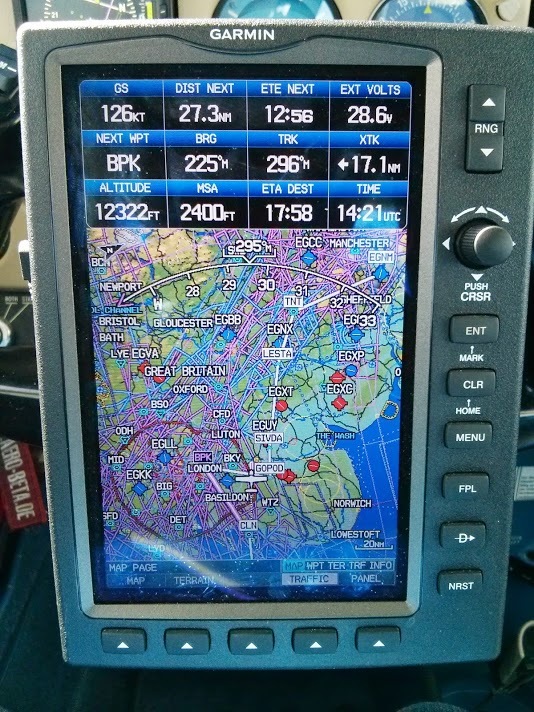
The weather gradually got worse, the tops were rising and there was another layer on top. I managed to stay between the layers at FL140. None of this was in the forecast but nothing to get worried about, lots of positive temperature below and almost no convective activity.
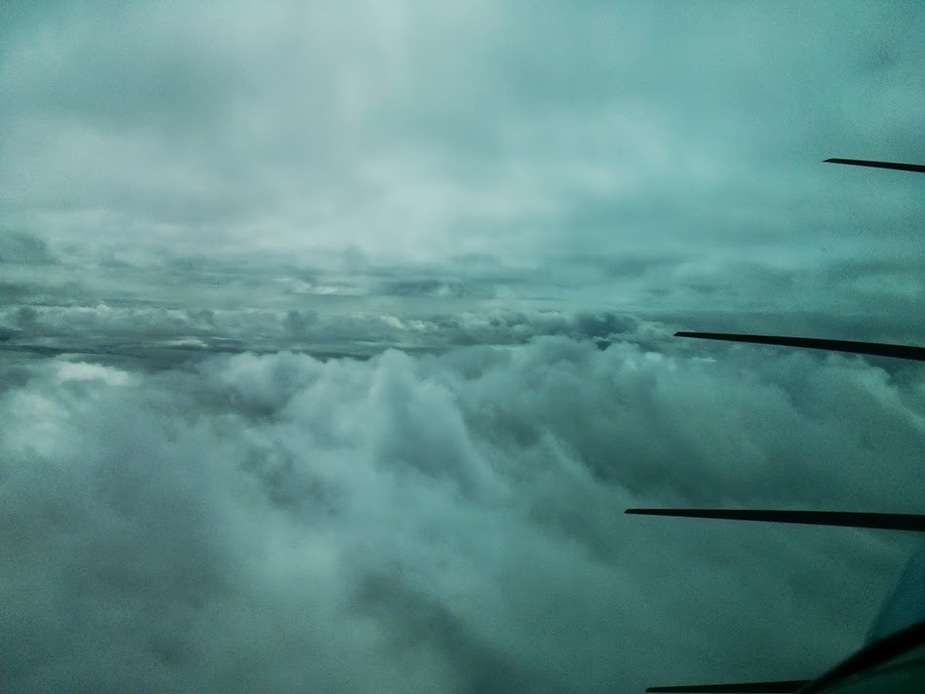
I picked up some ice during my very brief time in IMC so I was glad the layer was scattered and rather thin. It only took about 10 seconds to pick up that amount of ice.
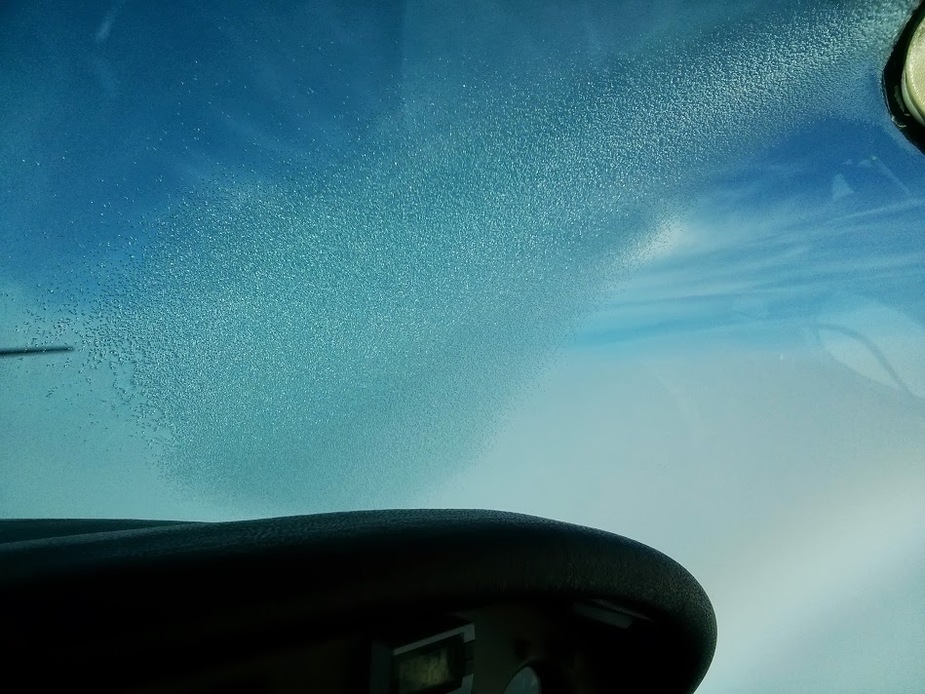
I was transferred from London Control to Scottish Control and continued to receive good service. The vectors were erratic at times but there was a lot of other traffic. I actually did see quite a lot of these aircraft. I like to configure my PowerFLARM to have no altitude restriction and 16NM radius and then spot the aircraft it displays. Usually this works just fine.
Scottish Control gave me a multi step descent from FL140 down to FL080 at which point Leeds Approach took over and brought me all the way down to 3500ft for a radar vectored ILS 14. Unfortunately, I didn't pay enough attention to my descent rate and was too high when I was to intercept the ILS. Most of the time, I had ATC do that (adjust the intercept vectors to my descent rate or ask me to descent faster) but Leeds Approach didn't care and I was on the ILS 1000ft too high. So gear out, engine to almost idle and a dive. This was all done in IMC, from about FL080 until 2000ft I was in IMC (again, this was not forecast). The landing was uneventful, Leeds ATC was nice and I was sent to the Multiflight handling agent.
Unfortunately handling is mandatory in Leeds and not cheap (30 pounds when buying fuel, 30 pounds per night in the hanger, 10 pounds outside) but it's nice to see all these people take care of the airplane and Leeds is a big airport, so I'm not complaining.
The aircraft performed flawlessly, giving me 161KTAS most of the time (subtract 40kt wind to get the GS) and burning 48l/h. I arrived after 4:30h with about 2:15h reserve.
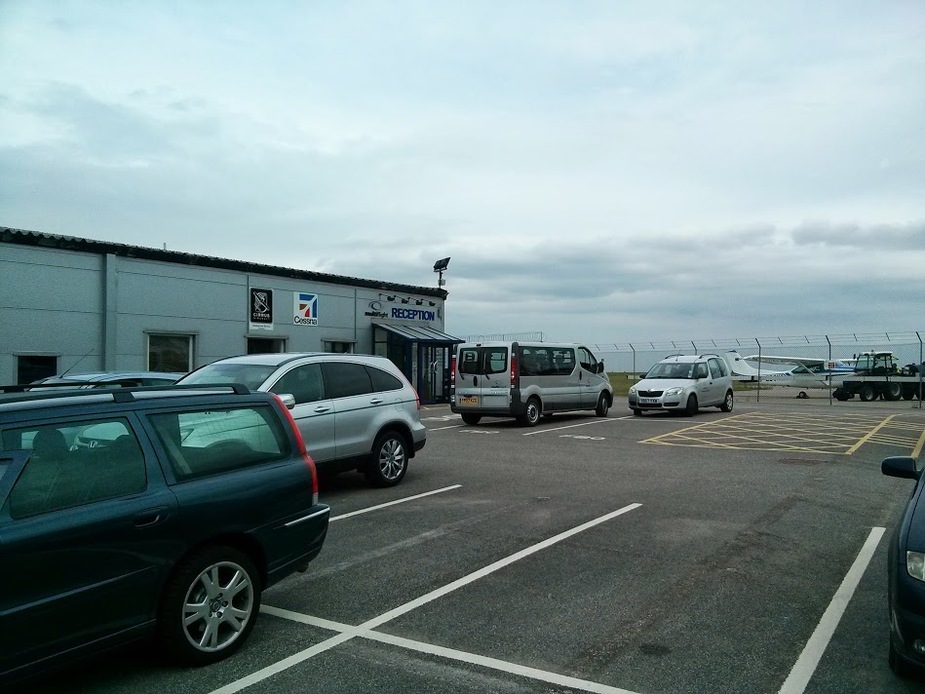
As expected, flying in the UK is like driving in the UK -- a well working system but different. I want to explore IFR in OCAS in the future and find out what I have to do for shortcuts OCAS without busting airspaces and getting back into the system lateron. I find it to be rather unfortunate that one of the richest countries in the world cannot afford to have a proper airspace layout with ATC services all over the country. Even the poorest Southern European country can do that. Let's hope the EU will further standardize the skies and require the UK to offer ATC over its complete territory so that one can do proper IFR not just on a few select routes.
Very interesting, and as always, I love seeing people's photos. Shame you were given a bit of a hard time by London Control. I don't fly IFR under their control so cant account for them, but I guess the London area is extremely congested, with lots of big and small aircraft climbing and descending and holding on some of the VOR's you mentioned. Although you don't like it (I can understand why), I do have an affinity for BPK, as it is just a mere 3.3 NM from where I am based.
I think there are a couple of issues in the UK:
London Control does not provide a service to traffic in Class G - except in unusual circumstances e.g. after coming off a high altitude route into the UK, when they will give you a sort of FIS for a short while after you dropped out of CAS. I think this is caused by the "total cost recovery" principle which UK ATC employs.
There are only a few routes available for low level (basically below FL200) crossings of the London area. There are some N-S routes around FL100/110. I don't think they are published openly. On this trip I was vectored during the whole bottom half. (I was rather amused to find that pic in one of the presentations at the CAA airspace conference a few weeks ago  )
)
You also need to make sure your route does not drop you out of CAS too early. If you drop out of CAS (out of Class A, in the UK case) say 100nm before the destination, you probably won't get back in, and have to hack your way through the Class G below, which is OK but you will lose all the weather avoidance options.
It's time to figure out how to get back from Leeds EGNM to Stuttgart. This time a little bit more difficult due to the weather. There is a rather extensive cold front over the UK bringing lots of clouds and rain. Luckily no thunderstorms or strong convective activity.
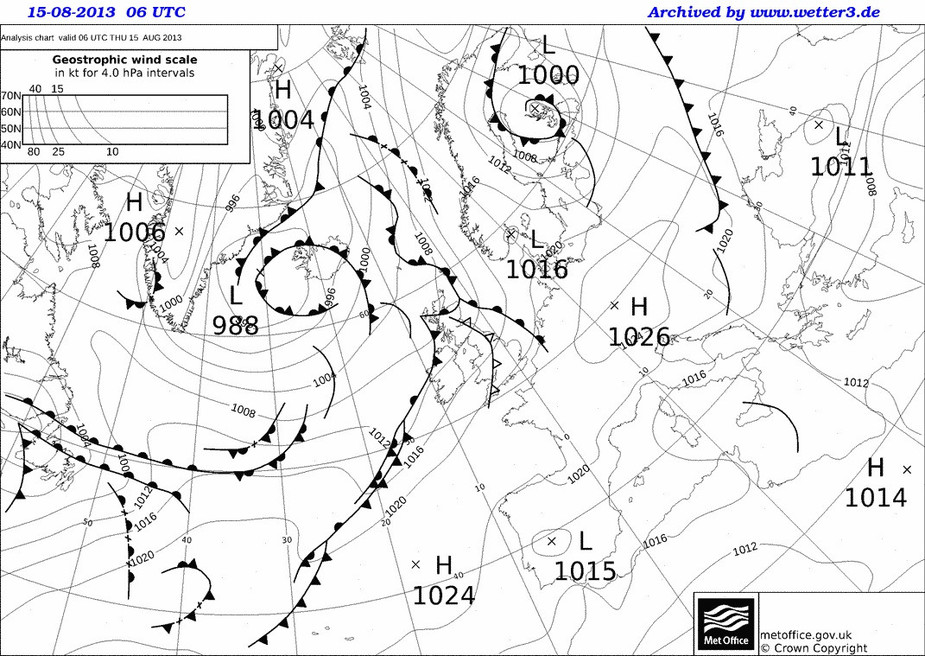
EGNM 160458Z 1606/1706 28010KT 9999 BKN009 BECMG 1606/1609 SCT020 PROB30 TEMPO 1606/1607 6000 -RA PROB30 TEMPO 1612/1617 29015G25KT BECMG 1621/1624 22006KT
A proper IFR routing would take me south via Birmingham and Nottingham and then east over the sea. The total overhead would be 14% which isn't nice but it also means flying at at least FL100 (UK airways!) and in possible icing conditions.
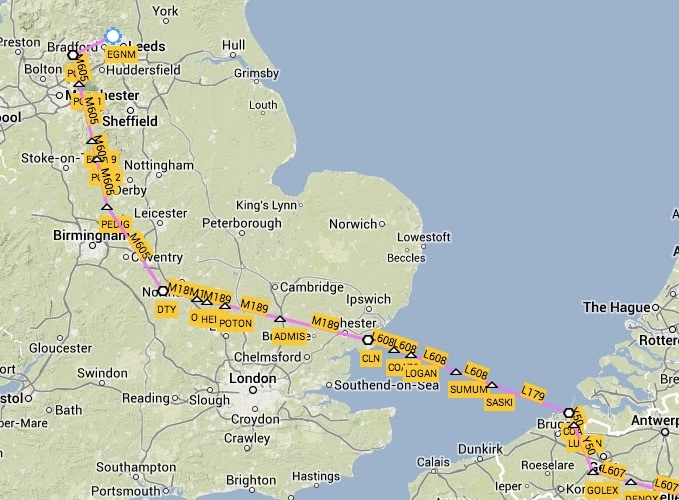
A more direct route, southeast from Leeds to the coast (Clacton VOR) looks a little bit better but there are no airways so proper IFR is not possible, not even at FL100+.
This leaves me with only one choice (apart from not flying): IFR in airspace G, own navigation, probably in IMC all the time until the UK coast. At Clacton, I could ask for a joining clearance and switch to proper IFR. Of course I have to navigate the airspace and terrain myself which seems not too difficult. Initially at 2000ft MSL to get through the Doncaster airspace and another, then climbing to 3500ft until reaching Clacton. The land is flat and I will be in positive temperatures. It might get a bit rough with embedded TCUs but it doesn't look like they would have a lot of energy.
Quite exciting, IFR without ATC, own navigation in IMC.
Just wondering why you feel the embedded TCU will not have a lot of energy,
To fly in UK Class G in IMC, you need
That's obvious, of course 
To get the IFR pickup you need to choose a place where that is actually possible in ATC/traffic terms (no good asking for a climb to FL100 20nm east of Gatwick for example, though sometimes even that airspace will happen to be empty) and where the base of CAS is at a usable level.
I have found that ATC will refuse to co-operate with a CAS join if the base of CAS is high e.g. FL150 (though that was Manchester Control, not London Control which is normally very helpful).
I've never tried doing it at CLN but the CAS base there is 5500ft so it should work from that point of view.
The south east UK doesn't look too bad at the moment.
You don't need a Z flight plan. An "I" flight plan is OK, initially at say 3000ft and then going up to FL100 at CLN. In any case you won't be able to depart Leeds (which is in CAS) below their VFR minima (probably 1500ft cloudbase) on a Z. They will have to throw away that flight plan and let you do an IFR departure, which is fine (you don't need a flight plan for UK airspace) but you won't be able to get a popup clearance later because after 30 mins or so that flight plan will get binned...
EGNM 160650Z 27013KT 9999 FEW002 SCT006 15/14 Q1011
This is an update in case anybody is doing the same thing. I have already phoned Achim with this.
In situations like this, where filing a "proper" Eurocontrol IFR route and flying it at the filed level is going to put you in icing conditions and other hazardous wx, one can file the flight plan but ask ATC that a low level departure on some different heading is required.
They will let you do that but will keep the IFR flight plan in the system, so that when later (once clear of the wx) you want a climb into CAS, London Control will have the flight plan.
Without an IFR flight plan in the system, an IFR clearance into enroute CAS (a US-style "popup clearance") is almost impossible in the UK. I've never managed to get it and I don't know of anybody else who has. The reason (which I got from a foreign ATCO) seems to be that IFR flight in CAS always requires at least a fragment of an IFR flight plan to be generated and inserted into the computer, and UK ATC did not buy the software required to make that easy.
Good luck, I m happy not to fly in this weather!
I am alive and well 
Flight took a bit less than 4h and I have to say, it was a good one. There was never a situation where I wished I would be on the ground, always a good sign when flying...
The cold front was sweeping over the UK with some high reaching cloud (tropopause) but luckily it was weaker than anticipated. The backside weather in Leeds was OK and looking at the weather radar and a few METARs on the route, there was nothing to stop me. I knew that I could always turn around if I was forced into icing levels or those TCUs turned out to be nastier than I expected.
Departure was planned for 0930Z with an IFR flight plan filed at Eurocontrol but taking me through uncontrolled airspace until the UK coast at Clacton where I planned to join the airway system and continue "normally".
DOPEK DCT VEGUS DCT MAM DCT CLN/N0140F100 L608 SASKI L179 COA L179 HELEN L179 NIK DCT FLO DCT DINKI DCT UNEPI DCT HAN DCT OLIVI DCT RORAS DCT TAGIK DCT GUPIN VFR
I arrived at the Multiflight handling office at 0845Z and was impressed by their efficiency. The invoice was ready within 3 minutes and the airplane moved from the hangar to the apron at the same time. Leeds ATC had called Multiflight asking me to call back because they saw in my flight plan that I had something non standard in mind (Eurocontrol required me to start with one of the official SID terminator waypoints but this was not where I wanted to go so my next waypoint VEGUS would take me back). I explained that I wanted to go OCAS low level, had planned 2000ft AGL but I wouldn't mind higher if they can arrange for transit clearances of the various civil and military airports on that route. ATC was very helpful and promised they would try to keep me going at 3500ft AGL.
At 0935Z I was taxiing and backtracking on runway 31 with a departure clearance to climb to 3500ft and go on my course 120. A squawk was given and off I went. Initially the weather was rather good, few people know that Leeds is one of the largest cities in the UK but it becomes quite obvious from the cockpit.
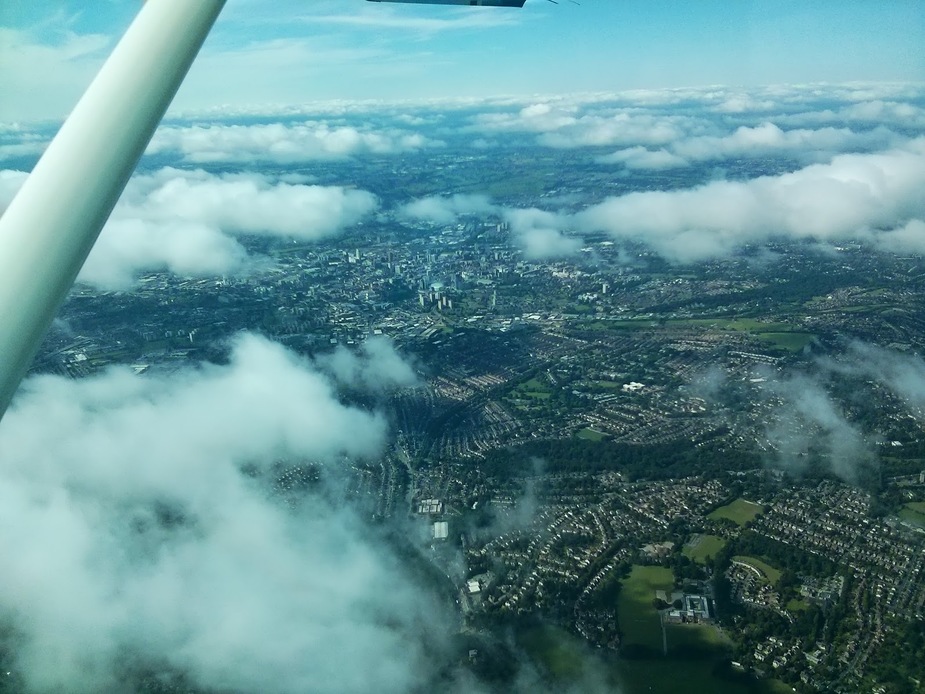
I was using SkyDemon to navigate and make sure I get all clearances for controlled airspace on my way. The autopilot was flying and the air was mostly calm. Leeds had arranged for a transit through Doncaster airspace, Scampton (military) was inactive so I was good to go and also the next airport Coningsby offered me to transit through its airspace. From this time on I was mostly in IMC but every now and then I could see cloud shapes or even terrain. I turned on a direct routing to the Clacton VOR where I was headed for my Eurocontrol IFR clearance. A danger area between Boston and King's Lynn turned out to be inactive and free from clouds!

From that point on, the visual impressions thinned out, I was in IMC for most of the time but almost without turbulence. Shortly before Marham, I was asked by Marham ATC to orbit for separation which is something one would never do in IMC but I was lucky to be in a layer in between so I could comply.
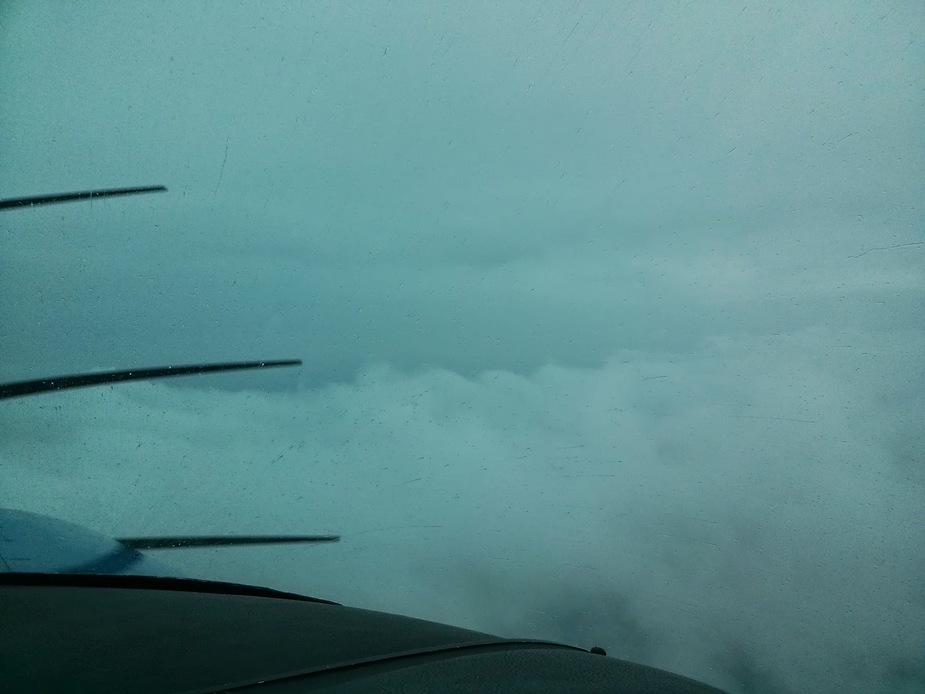
Next was Lakenheath which came as a surprise. I was greeted by an American and I suddenly felt like in the states. The airport was busy with several C130s landing and departing and everything was like in the US ("you are cleared for the option" etc."). I was given a few vectors to avoid a C130 but unfortunately I only saw it on my PowerFLARM. Hard to spot aircraft when both are in IMC!
Last was Wattisham where I got a clearance just like before. All in all I received 8 squawk codes until I arrived at Clacton, I think that is a personal record! I was talking to at least 10 different stations but the service was top notch. Everybody thought ahead and tried to clear my way and only twice sent me to London Information who were informed about my flight and didn't need any information from me at all. 15 minutes before Clacton I informed London Information that I would like to get a joining clearance for the airway from CLN via SASKIA to COA in Belgium, lowest flight level possible. They organized everything, asked back whether FL070 and later FL090 would be OK and then handed me over to London Control. About 5 minutes later I actually managed to pass my message -- what a busy frequency! The clearance came promptly and just as expected. The first half of the sea passage was in IMC but then it cleared up and I got a pretty view of the Belgian coast.

There was some convective buildup and I climbed to FL130 which brought me on top. Given that I had 40kt headwind on my way to Leeds, I was hoping to see the same wind on the way back. The wind was 40kt like before but unfortunately not from the northwest but the southwest! For most of the flight I had again a headwind component of 2-4kt. Better than 40kt but still, what a disappointment!
Belgium was straightforward, to the Brussels VOR, then Charleroi, a few vectors for separation and straight to the German border. I had just entered Germany when I got a direct Luburg LBU which was a 150NM direct bringing me almost home. Excellent. The weather in Germany was CAVOK and temperature 28C at the destination aerodrome.
Flight time 3:51h, fuel burned 185l, i.e. 48l/h. Average airspeed 150KTAS low level in the UK and 161KTAS at FL130. The aircraft performed flawlessly, over the sea the engine sounded even smoother than usual!
It's a pity that the UK has so little CAS but IFR in G is a very powerful tool, allowing you to do things that you can't do elsewhere. ATC/FIS was top notch, everybody phoned ahead and I didn't have to explain what and where a single time. When you know the elevation, then you can do low level IFR in IMC and thereby avoid icing. This enables a lot of GA flights that would not be possible in e.g. Germany. Still, just relying on the very small probability of mid-airs as a means of separation is something I find very hard to accept. At least the UK should give a radar picture to London Information, even if they're not ATC or qualified, it would only benefit everybody. I am definitely going to explore this more, IFR with own navigation is quite a thrilling experience!
Glad you enjoyed it learnt something new.
IFR with own navigation is quite a thrilling experience!
Shows how "deformed" our (=the german pilots') minds are as far as the Term IFR is concerned. We tend to equate IFR = flight plans, clearances, permanent radio contact, radar and generally just doing "what the controller tells us to do". Not quite what ICAO had in mind though...